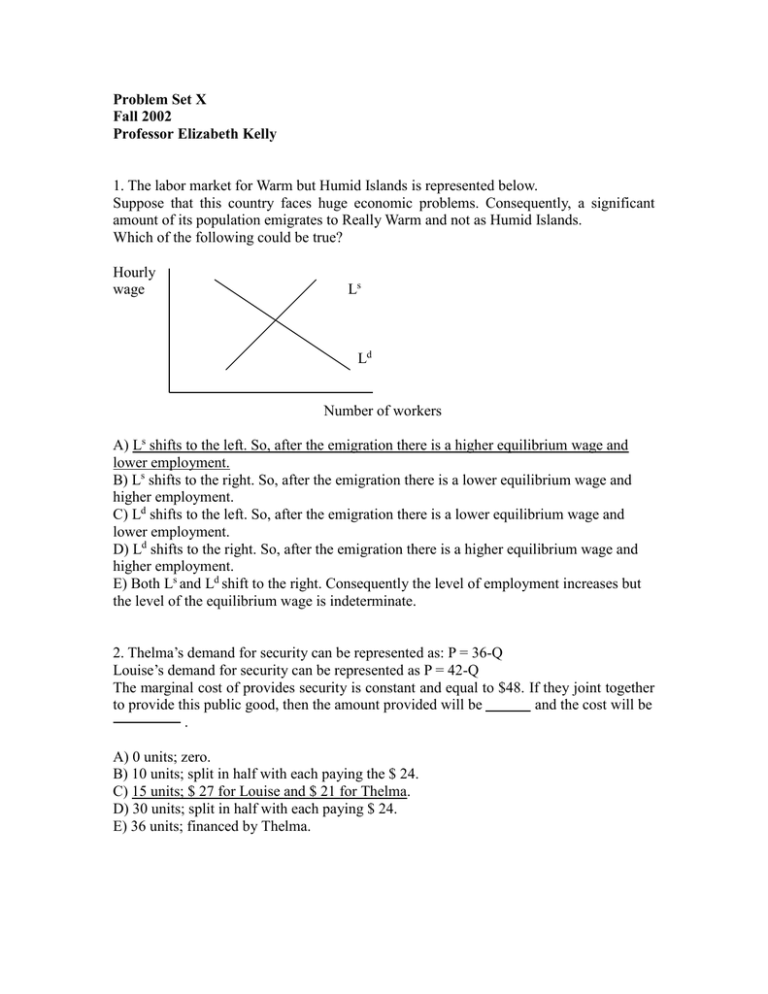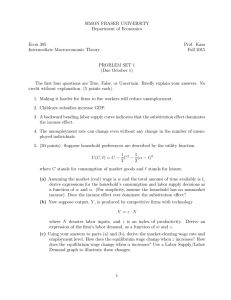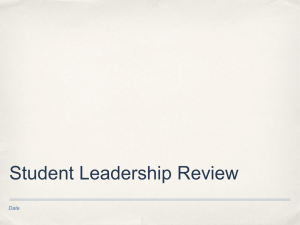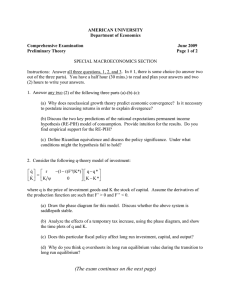Problem Set X Fall 2002 Professor Elizabeth Kelly
advertisement

Problem Set X Fall 2002 Professor Elizabeth Kelly 1. The labor market for Warm but Humid Islands is represented below. Suppose that this country faces huge economic problems. Consequently, a significant amount of its population emigrates to Really Warm and not as Humid Islands. Which of the following could be true? Hourly wage Ls Ld Number of workers A) Ls shifts to the left. So, after the emigration there is a higher equilibrium wage and lower employment. B) Ls shifts to the right. So, after the emigration there is a lower equilibrium wage and higher employment. C) Ld shifts to the left. So, after the emigration there is a lower equilibrium wage and lower employment. D) Ld shifts to the right. So, after the emigration there is a higher equilibrium wage and higher employment. E) Both Ls and Ld shift to the right. Consequently the level of employment increases but the level of the equilibrium wage is indeterminate. 2. Thelma’s demand for security can be represented as: P = 36-Q Louise’s demand for security can be represented as P = 42-Q The marginal cost of provides security is constant and equal to $48. If they joint together to provide this public good, then the amount provided will be and the cost will be . A) 0 units; zero. B) 10 units; split in half with each paying the $ 24. C) 15 units; $ 27 for Louise and $ 21 for Thelma. D) 30 units; split in half with each paying $ 24. E) 36 units; financed by Thelma. 3. The production and use of gasoline generates pollution. Pollution is a consequence of the production and use of gasoline that affects someone not immediately involved in the transaction. Which of the following is true? A) In economics we call this effect a negative externality. B) In economics we call this effect a positive externality. C) The problem with pollution is that it is a public good, and in consequence is difficult to finance. D) If pollution is not significant it is better to ignore it. E) It makes no sense to worry about pollution. Firms are maximizing profits, so what they decide to do must be best for the whole society. 4. Buying used cars is not an easy task. You do not have as much information as the seller about the car you are buying. Which of the following is true? A) In fact, a moral hazard problem occurs when the seller offers us a bad car, telling us that the car is in very good shape. B) Both moral risk and asymmetric information can been studied in this market. C) There is no asymmetric information in this market, you know a lot about cars and you will realize if the car is in bad shape. D) If you are planning to buy a used car you should know that you are facing an asymmetric information situation. E) Even though you know a lot about cars, the seller will try to confuse you there by creating a moral hazard problem.





